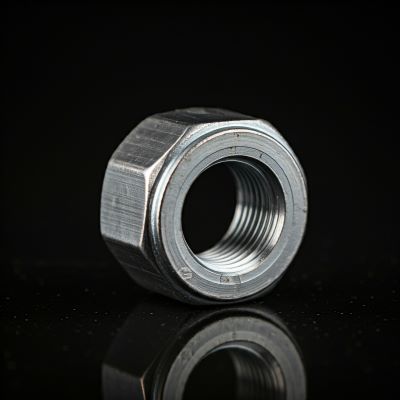Compression nuts are essential components in plumbing systems, ensuring a secure and leak-free connection between pipes. However, even the most well-installed compression nuts can experience leaks over time.
In this blog post, we’ll delve into the common causes of compression nut leaks and provide practical solutions to help you identify and address these issues.
What is a Compression Nut and How Does It Work?
A compression nut is a threaded fitting that is used to connect pipes together. It works by compressing a ferrule, a metal ring that is inserted between the pipe and the fitting, creating a tight seal. This mechanism is widely used in various plumbing applications due to its ease of installation and versatility.
Common Applications of Compression Fittings:
➡️ Water supply lines
➡️ Gas lines
➡️ Radiators and heating systems
➡️ Irrigation systems
➡️ Industrial piping
Signs Your Compression Nut is Leaking:
➡️ Water or gas dripping from the fitting
➡️ Musty or unpleasant odors
➡️ High water bills
➡️ Wet spots on the floor or ceiling
Common Causes of Compression Nut Leaking
Several factors can contribute to compression nut leaks. Knowing these reasons will enable you to recognize the issue and take appropriate action to resolve it.
Improper Installation Techniques:
➡️ Incorrect ferrule orientation
➡️ Failure to tighten the nut to the proper torque
➡️ Damaged or missing ferrule
Over-tightening or Under-tightening the Nut:
➡️ Over-tightening can damage the ferrule or pipe, leading to leaks.
➡️ Under-tightening can result in an insufficient seal and leaks.
Damaged Ferrule or Tubing:
➡️ Corrosion, wear, or scratches on the ferrule or tubing can compromise the seal.
Misalignment of the Compression Fitting:
➡️ If the fitting is not properly aligned with the pipe, it can cause leaks.
Wear and Tear Over Time:
➡️ Over time, the compression nut and ferrule may experience wear and tear, leading to leaks.
How to Fix a Compression Nut Leak
If you discover a leak in your compression nut, there are several steps you can take to address the issue.
Step-by-Step Guide to Tightening a Compression Nut Properly:
1. Shut off the water supply: Locate the shut-off valve and turn it to the closed position.
2. Drain the system: Open a faucet to release any remaining water pressure.
3. Access the compression nut: Remove any insulation or other obstructions that may be blocking access.
4. Tighten the nut: Use a wrench or adjustable pliers to carefully tighten the nut. Be cautious not to over-tighten.
5. Check for leaks: Turn on the water supply and inspect the compression nut for any signs of leaks.
When to Replace the Compression Nut or Ferrule:
➡️ If the nut or ferrule is severely damaged or corroded, it may need to be replaced.
➡️ If tightening the nut does not resolve the leak, it may be necessary to replace the fitting.
Using Thread Sealants and Teflon Tape Correctly:
➡️ In some cases, applying thread sealant or Teflon tape to the threads of the fitting can help prevent leaks. However, these products should be used sparingly and according to the manufacturer’s instructions.
Fixing Leaks in Copper vs. Plastic Tubing:
➡️ The approach to fixing leaks in copper and plastic tubing may differ slightly. Seek advice from a qualified plumber for particular recommendations.
Preventing Future Compression Nut Leaks
By following these best practices, you can significantly reduce the risk of compression nut leaks.
Best Practices for Installation:
➡️ Use high-quality compression fittings and ferrules.
➡️ Verify that the fitting and pipe are correctly aligned. For detailed advice, speak with a licensed plumber.
➡️ Tighten the nut to the recommended torque.
Choosing the Right Compression Fitting for the Job:
➡️ Select compression fittings that are compatible with the pipe material and application.
Regular Maintenance and Inspection Tips:
➡️ Periodically inspect compression nuts for signs of leaks or wear.
➡️ Tighten any loose nuts as needed.
How to Avoid Common Installation Mistakes:
➡️ Follow manufacturer’s instructions carefully.
➡️ Use the correct tools and techniques.
➡️ Consult a professional plumber if you are unsure.
FAQs on Compression Nut Leaks
Q: Can Over-tightening a Compression Nut Cause Leaks?
A: Yes, over-tightening a compression nut can damage the ferrule or pipe, leading to leaks.
Q: How Often Should I Inspect Compression Fittings for Leaks?
A: It is recommended to inspect compression fittings at least once a year, or more frequently in areas with high water pressure or corrosive conditions.
Q: What Materials Work Best with Compression Nuts?
A: Compression nuts are compatible with a variety of materials, including copper, brass, steel, and plastic.
Wrapping Up
Compression nut leaks can be frustrating and inconvenient, but with proper knowledge and care, they can be prevented and resolved effectively.
By understanding the common causes of leaks and following the tips provided in this blog post, you can ensure the long-term reliability of your plumbing system.
Post time: Sep-09-2024


